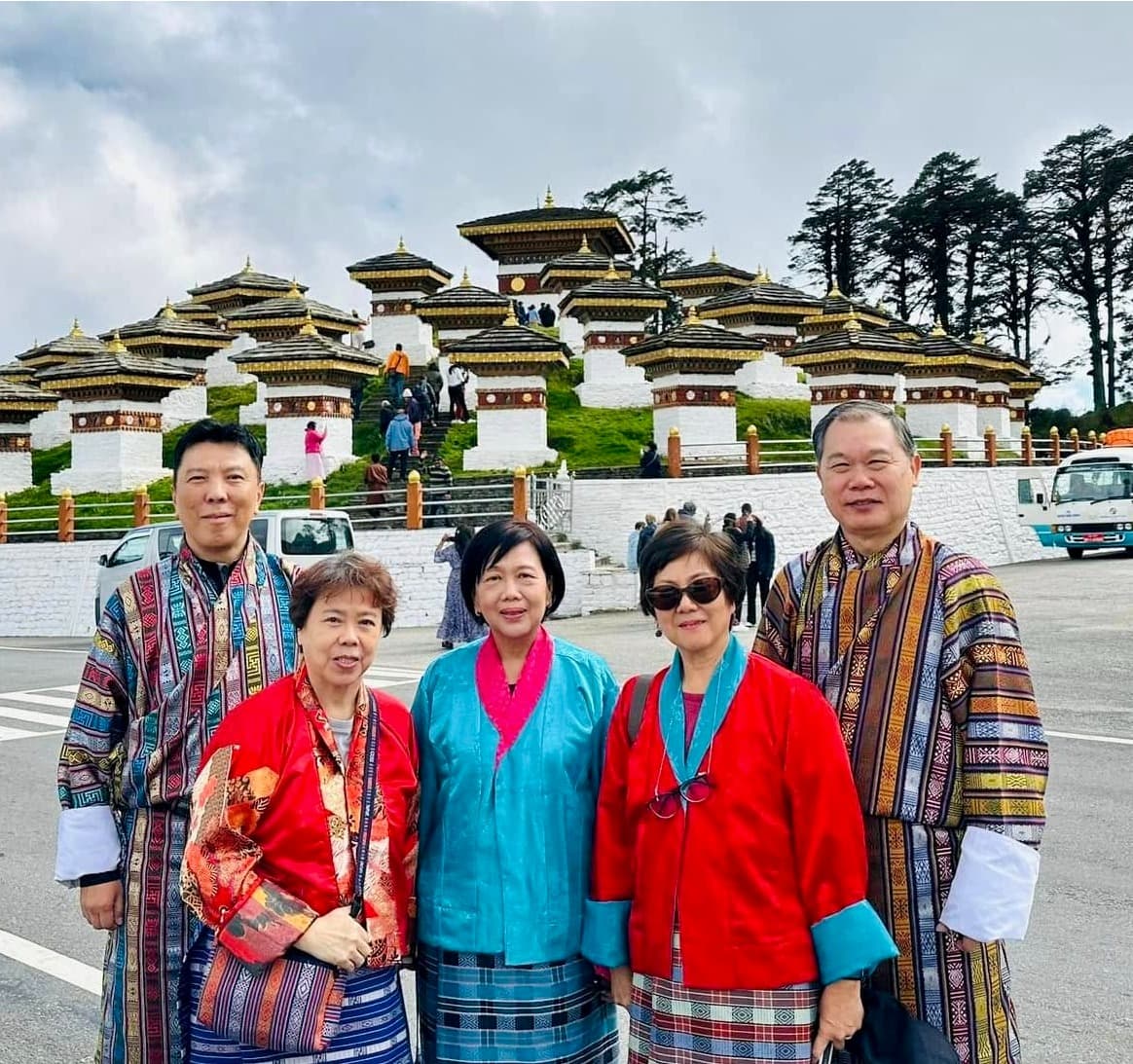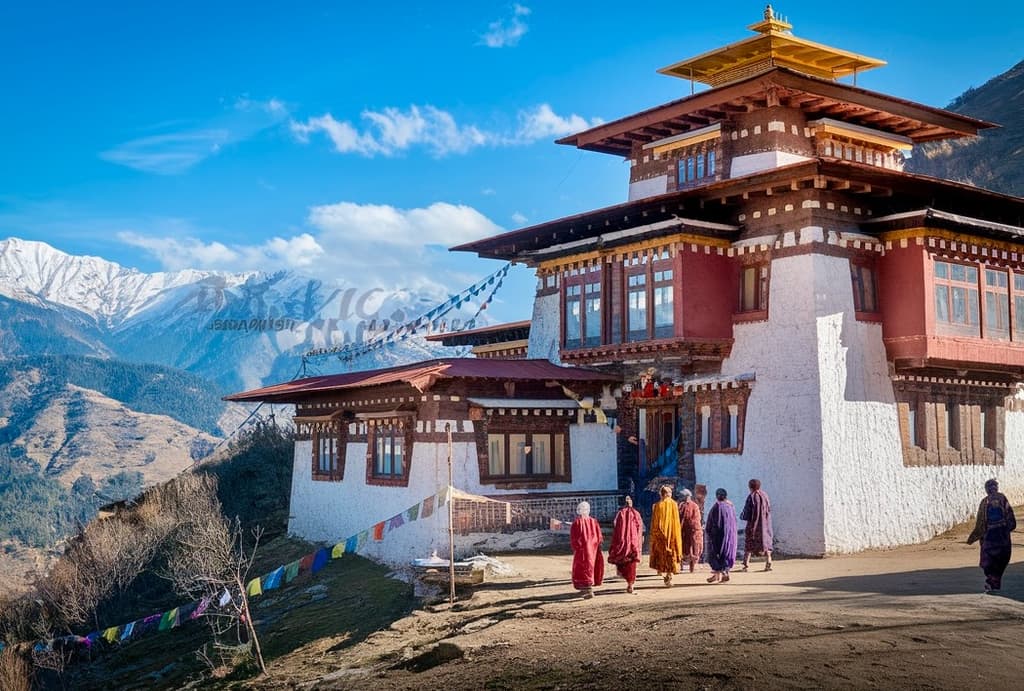Paro—The Gateway to Bhutan's Spiritual Heart
Overview
Paro, a stunning valley town, serves as the main gateway to Bhutan, as it is home to the country’s only international airport. Nestled at an altitude of 2,280 meters, this charming town is rich in history, culture, and natural beauty. Paro is known for its scenic landscapes, featuring lush green fields, traditional Bhutanese houses, and snow-capped mountains. The town is dotted with ancient monasteries, dzongs (fortresses), and sacred sites, making it an essential stop for travelers exploring Bhutan. Among its most famous landmarks is the Paro Taktsang, or Tiger’s Nest Monastery, which clings dramatically to a sheer cliff at 3,120 meters above sea level. This sacred monastery is one of the most iconic and spiritual sites in Bhutan, attracting pilgrims and adventurers alike. Other prominent attractions include Paro Rinpung Dzong, a majestic fortress that serves as a monastery and administrative center, and the National Museum of Bhutan, which provides insight into Bhutan’s rich heritage.
Apart from its cultural treasures, Paro is surrounded by breathtaking natural landscapes. The Chele La Pass, the highest motorable road in Bhutan at 3,988 meters, offers panoramic views of the Himalayan ranges and is a popular spot for hiking and photography. The tranquil Kyichu Lhakhang, one of Bhutan’s oldest and most sacred temples, is a must-visit for those seeking spiritual solace. Paro’s picturesque town center is lined with traditional wooden houses, handicraft shops, and local eateries offering authentic Bhutanese cuisine. Whether it’s exploring ancient monasteries, hiking through pristine trails, or simply soaking in the peaceful ambiance, Paro captivates travelers with its timeless beauty and deep spiritual essence.
Major Highlights
- Tiger’s Nest Monastery (Taktsang): One of the most iconic landmarks of Bhutan, this monastery is perched on a cliffside and offers panoramic views of the Paro Valley. It is a sacred pilgrimage site and a must-visit for anyone traveling to Bhutan. The monastery is accessible by a scenic and somewhat challenging hike, which takes around 2-3 hours to reach.
- Paro Dzong (Rinpung Dzong): Built in the 15th century, Paro Dzong is a stunning example of traditional Bhutanese architecture. The dzong is located on the banks of the Paro River and is used for administrative and monastic purposes. It is a perfect spot for photography with its massive walls and intricate wooden carvings.
- Kyichu Lhakhang: One of the oldest and most significant temples in Bhutan, Kyichu Lhakhang was built in the 7th century by the Tibetan king Songtsen Gampo. The temple is a peaceful place of worship and is considered to be an important site for Buddhists.
- National Museum of Bhutan: Located in the Paro Dzong, the National Museum of Bhutan offers a fascinating insight into Bhutanese history, art, and culture. The museum houses a vast collection of artifacts, including Bhutanese textiles, traditional armor, and religious relics.
- Drukgyel Dzong: A historic fort built in the 17th century, Drukgyel Dzong is an important site for Bhutanese history, especially in terms of defending the country against Tibetan invasions. Though in ruins, it remains an impressive site, with the backdrop of Mount Jomolhari providing a stunning view.
- Paro Weekend Market: A lively and colorful market where locals sell fresh produce, handicrafts, and textiles, the Paro Weekend Market is an excellent place to experience the local culture, try Bhutanese snacks, and shop for souvenirs.
- Jomolhari Mountain: Known as the "Bride of the Himalayas," Mount Jomolhari towers over the Paro Valley and is one of the most beautiful and sacred peaks in Bhutan. The mountain is often visible from Paro and offers a stunning backdrop to the town.
Accommodation & Food
Paro offers a range of accommodations, from guesthouses and mid-range hotels to luxury resorts. The accommodation options are well-equipped, offering modern amenities while maintaining a traditional Bhutanese charm. Some of the popular options include Uma by COMO Paro, which combines luxury with Bhutanese tradition, and Zhiwa Ling Heritage, which offers a boutique experience with authentic Bhutanese architecture.
Bhutanese cuisine is an integral part of the cultural experience in Paro. Traditional dishes like ema datshi (chili and cheese), momos (dumplings), and thukpa (noodle soup) are commonly served. Yak butter tea and local rice dishes are also available in many restaurants and hotels. For those seeking international cuisine, many hotels and resorts offer a blend of Bhutanese and Western dishes.
Route to Paro
Paro is the most accessible destination in Bhutan, as it is home to the only international airport in the country. The Paro International Airport has flights arriving from cities like Delhi, Bangkok, and Kathmandu, making it easy to fly into Bhutan. Once in Paro, the town and surrounding areas are easily accessible by taxi, private vehicle, or bus.
From Thimphu, it is about a 1.5 to 2-hour drive to Paro, offering beautiful views of the Bhutanese countryside along the way. There are also hiking routes to Paro from neighboring towns like Haa and Punakha, which allow visitors to experience the stunning scenery of Bhutan's natural landscapes.
Tips for Visiting Paro
- Best Time to Visit: The best times to visit Paro are during spring (March to May) and autumn (September to November), when the weather is mild and the skies are clear, offering optimal conditions for trekking and sightseeing.
- Altitude Awareness: Paro is situated at an altitude of about 2,250 meters, and some areas like Tiger’s Nest Monastery are at higher altitudes. Take it slow to avoid altitude sickness, and drink plenty of water to stay hydrated.
- Dress Modestly: Bhutan is a deeply spiritual country, and it’s essential to dress modestly, especially when visiting temples and monasteries. Be sure to remove your shoes before entering sacred sites.
- Currency: Bhutan’s currency is the Ngultrum (BTN), but the Indian Rupee (INR) is also accepted in many places. It’s advisable to carry cash as credit card facilities may not be available in remote areas.
- Respect Local Customs: Bhutanese culture is rich and unique. Be respectful when visiting religious sites and interacting with locals, especially in rural areas. Always ask for permission before taking photographs of people or ceremonies.
- Travel Permits: To visit Bhutan, all travelers require a visa, which can be arranged through a licensed Bhutanese tour operator. Ensure that all necessary permits are in order before traveling.
- Weather Preparation: Paro’s weather can vary, so pack layered clothing to ensure comfort in both warm and cool temperatures. Bring a jacket for chilly mornings and evenings, and be prepared for occasional rain, especially during the monsoon season.
Why Visit Paro with Luxury Holidays Nepal?
- Expert Guides: Luxury Holidays Nepal offers experienced, knowledgeable guides who provide insights into Bhutan’s culture, history, and spiritual significance.
- Seamless Logistics: From arranging your travel permits to ensuring smooth transportation, Luxury Holidays Nepal handles all logistics to ensure a hassle-free experience.
- Luxury Accommodation: Stay in luxurious resorts with modern amenities and traditional Bhutanese architecture, offering stunning views of the Paro Valley and surrounding mountains.
- Customizable Itineraries: Whether you want to explore Paro’s religious sites, go trekking in the surrounding hills, or take part in Bhutanese cultural experiences, Luxury Holidays Nepal offers tailored itineraries to suit your preferences.
- Cultural Immersion: Luxury Holidays Nepal can arrange exclusive cultural experiences, including private temple tours, visits to local villages, and opportunities to engage with Bhutanese traditions.
FAQs
Q: What is the best time to visit Paro?
A: The best times to visit Paro are spring (March to May) and autumn (September to November) when the weather is mild and the skies are clear for optimal trekking and sightseeing.
Q: How do I get to Paro?
A: Paro is easily accessible by air, with flights arriving at Paro International Airport from cities like Delhi, Bangkok, and Kathmandu. You can also drive to Paro from Thimphu, which takes about 1.5 to 2 hours.
Q: What should I bring when visiting Paro?
A: Pack comfortable walking shoes for exploring temples, light clothing for the daytime, and warm layers for chilly evenings. A camera, sunscreen, and a water bottle are also recommended.
Q: What is the significance of Tiger’s Nest Monastery?
A: Tiger’s Nest Monastery is one of Bhutan’s most sacred sites, linked to the legend of Guru Rinpoche, who meditated at this cliffside location. It is a place of deep spiritual significance and offers spectacular views of the surrounding landscape.
Q: Is Paro suitable for a day trip?
A: While Paro can be visited on a day trip from Thimphu, staying at least two days allows you to explore the valley's major attractions, including Tiger’s Nest Monastery, Paro Dzong, and local temples.










